In: women
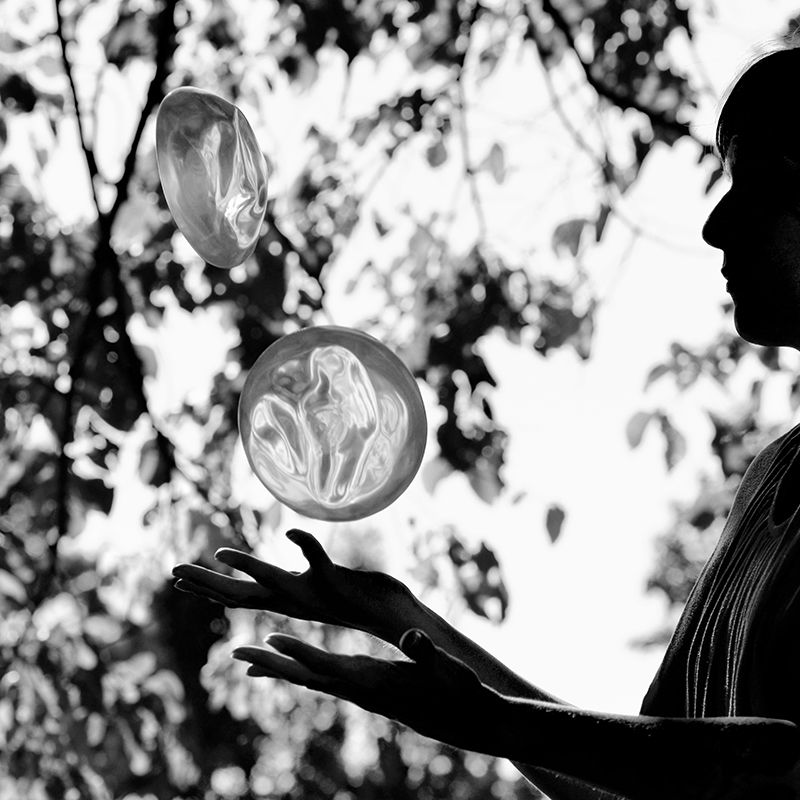
Lana | Transformations by Ruth Dick
June 1, 2022Lana | Transformations Photos by Ruth Dick Lana Series, Before, Image 3 - Photo by Ruth Dick LANA | TRANSFORMATIONS Photos... Read More

The Land of Error | Ioanna Sakellaraki
July 16, 2022The Land of Error | Ioanna Sakellaraki
Ioanna Sakellaraki is best known for her evocatively mournful series The Truth is in the Soil, and it was the work of hers that initially caught my attention. But perusing her site, the more enigmatic and haunted The Land of Error series is the work that keeps pulling me back to it, and inspires me to share it with others.
The only descriptor from the artist for this work is the following bold – and surely intimidating yet also evocative – declaration:
THE FUTURE IS SPLIT BETWEEN MANMADE ANTITHESIS AND PARODIES OF HUMAN PREDICTION. THIS IS WHERE FICTION FINDS ITS JUSTIFIED PLACE.
Sakellraki’s work is often about memory, and an element of mourning. I would inject here that looking at these images, I am reminded of Percy Bysshe Shelley’s poem Ozymandius (1918) : Nothing beside remains. Round the decay / Of that colossal wreck, boundless and bare, The lone and level sands stretch far away. Realizing that poem was written as WWI came to a close, I see correlations between the enigmatic post industrial wastelands that Sakellraki captures, and that earlier era’s destruction and desolation through technology. Quiet scenes of abandonment and detritus…..
Less historical, but equally dark, I’ve begun re watching the science fiction series FRINGE: and Sakellraki’s images also bring to mind the fictional group ZFT, from that show, with story arcs often centred upon world – building – and, of course, world – destroying, too. From that show’s mythology: ZFT in fact stands for “Zerstörung durch Fortschritte der Technologie” which is German for “Destruction by advancement of technology”….
More of Ioanna Sakellaraki’s artwork can be seen here, and more of this series can be enjoyed here.
~ Bart Gazzola
Read More
War Map Dress Trilogy | Carolyn Wren, 2003-2004
June 30, 2022Carolyn Wren | War Map Dress Trilogy, 2003-2004
(lino blocks, hand-printed on Dupont silk, thread, zippers, mannequins, model airplanes, black paint)
I encountered these towering figures during Wren’s retrospective exhibition Task At Hand at the now shuttered Rodman Hall Art Centre several years ago. Standing in the large back gallery space, the three female figures dominated the room, with the flow of their dresses spilling out from them, pooling around them on the gallery floor.
Visiting this show numerous times, I found that different ideas came to the fore with different interactions, from initial wonder to later, more critical consideration. When an artist / writer friend, Anna Szaflarski, visiting Niagara, came with me on one occasion, she saw the works in a very different light than I had, initially. Unsurprising, really, as when Szaflarski and I first met, it was around her exhibition at NAC about the historical detritus – or lack thereof – of General Motors’ legacy in St. Catharines, and I believe we connected over an irreverent honesty about history, the region, and the intersecting if conflicting stories of the place we both grew up in….
My reading had been informed by Wren’s own words, which are as follows: The ingenuity of Christopher Clayton Hutton’s invention of silk maps for the British Royal Air Force during World War II enabled pilots to use lightweight and durable maps to help them reach safety in times of crisis, and inspired women to make dresses out of the silk maps as their men returned home. The maps used by Wren in the dresses were made in Europe by the Canadian government and shipped to Canada for families to follow the movements of their loved ones fighting in the war. Alluding to multiple layers of symbolism of the landscape in relation to the body, and reflecting on war and the politics of Feminism (viewpoint, memory, and identity), The War Map Dress Trilogy is more about history, location, distances, than it is about terrain.
I talk a lot about ‘contested narratives’: but this story, this Curator’s Pick is very much about that. Szaflarski – a former student of Wren’s, as Caroline taught in Niagara for some time, and helped shape a few generations of artists and art appreciators – upon seeing the exhibition, and these ‘women’, spoke more in a manner reminiscent of Barbara Kruger’s famous – and still relevant – artwork that declares that YOUR BODY IS A BATTLEGROUND. These battlefield maps, on dresses hanging on mannequins without heads or hands, look more like spaces to be attacked, or acted upon, utterly passive and just victims…. (“Afterwards she could not walk for a week, her feet would not fit into her shoes, they were too swollen. It was the feet they’d do, for a first offence. They used steel cables, frayed at the ends. After that the hands. They didn’t care what they did to your feet and hands, even if it was permanent. Remember, said Aunt Lydia. For our purposes your feet and your hands are not essential.” Margaret Atwood, A Handmaid’s Tale).
More of Carolyn Wren’s work can be seen here. A recent curatorial project of mine, based upon the Rodman Hall Collection, and which included Wren’s work, can be seen here.
Photographs are by Sandy Fairbairn and the author.
~ Bart Gazzola
Read More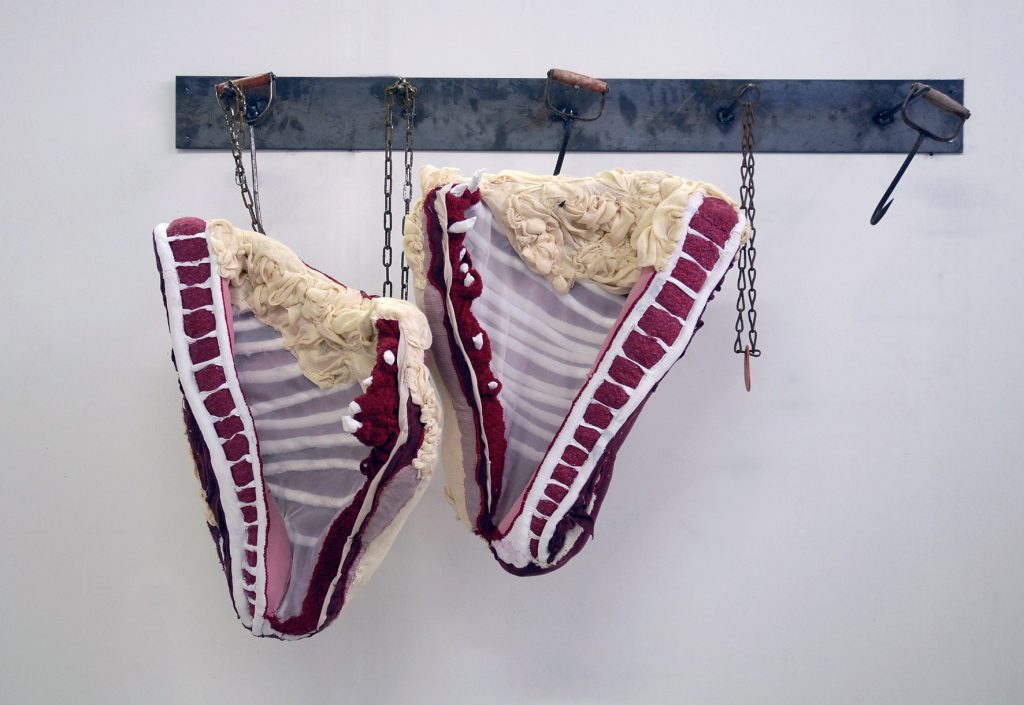
TAMARA KOSTIANOVSKY | ACTUS REUS
June 17, 2022Tamara Kostianovsky | Actus Reus
I am afraid the good woman did not realize how difficult it is to cut up a body, never having done so herself. (Margaret Atwood, Alias Grace)
To the Puritan all things are impure, as somebody says. (D.H. Lawrence, Sketches of Etruscan Places)
Tamara Kostianovsky’s artworks are disquieting; that is meant as praise. What her sculptures in the body of work titled Actus Reus – both specific elements and the larger installations of multiple components – do is allude, and we do the rest. What we initially ‘think’ we’re looking at is not at all what we’re truly observing. An initial revulsion turns to seduction, and we find ourselves drawn in by both the formal attraction as well as the conceptual fracture that only makes her work more enticing.
It’s almost appropriate, then, that one of the works that comprises Actus Reus is titled Abnegation (which means “the act of renouncing or rejecting something”); or that the name of the series itself is a ‘criminal’ legal term. Actus Reus is “sometimes called the external element or the objective element of a crime….the Latin term for the “guilty act” which, when proved beyond a reasonable doubt in combination with the mens rea, “guilty mind”, produces criminal liability in the common law−based criminal law jurisdictions of numerous countries….” There is almost a culpability in our own interactions with these artworks…..
Other works in this series – What It Once Was (2011), One and a Half (2008), Bound (2008), Venus (2011), Elegy (2009) – all leave the viewer feeling as though they’re looking upon – and enjoying gazing upon, devouring with their eyes – something that is forbidden, not meant to be seen, and definitely not be enjoyed, as though illicitly consuming visual pleasure from them….
Before I delve further into my interpretations of Kostianovsky’s work, her statement is as follows: The discovery of a world concealed behind the skin took form in my adolescence while working at a surgeon’s office, where veins exploded into waterfalls, cut ligaments set free the muscles they once contained, and chunks of fat poured over tissues of various colors and textures. A fascination with these encounters put the body at the center of my work, allowing me to use this imagery to reflect on consumption, ecology, and the voracious needs of the body.
Read more of Bart Gazzola’s thoughts on this work here.
Read More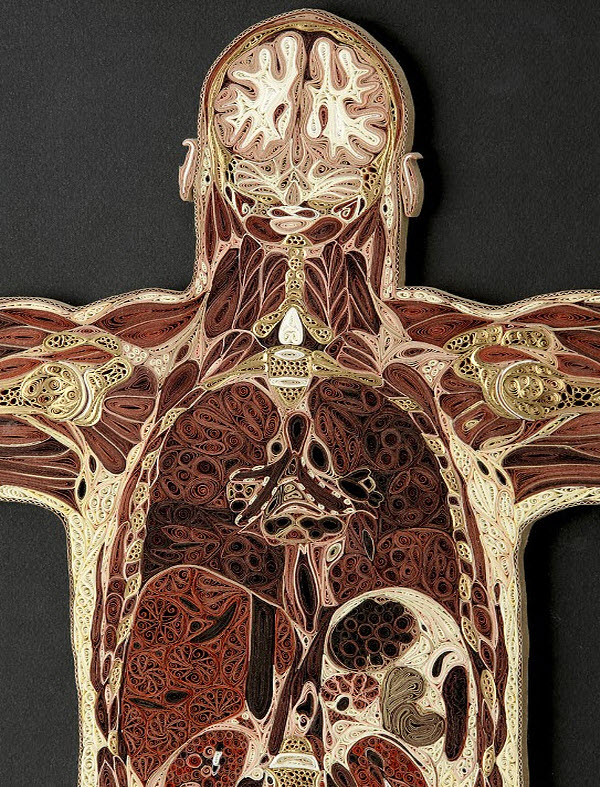
The Tissue Series | Lisa Nilsson
May 7, 2022The Tissue Series | Lisa Nilsson
Everything that has beauty has a body, and is a body;
everything that has being has being in the flesh:
and dreams are only drawn from the bodies that are.
(D. H. Lawrence)
Lisa Nilsson’s works are immediately visceral. But when you learn how they’re assembled, that bodily aesthetic, suggesting a wetness, a moistness, if you will, suddenly becomes dry and almost antiseptic.
This image is from her series of Anatomical Cross-Sections in Paper, and the artist offers the following about them and her process: These pieces are made of Japanese mulberry paper and the gilded edges of old books. They are constructed by a technique of rolling and shaping narrow strips of paper called quilling or paper filigree. Quilling was first practiced by Renaissance nuns and monks who are said to have made artistic use of the gilded edges of worn out bibles, and later by 18th century ladies who made artistic use of lots of free time. I find quilling exquisitely satisfying for rendering the densely squished and lovely internal landscape of the human body in cross section.
It’s interesting to consider the reference to bibles here – a tome that has much to say about the body and it’s ‘regulation’ (I’m old enough to remember the NEA ‘controversy’ when Mapplethorpe and Serrano were demonized by the Republican Helms, and how Lucy Lippard cast that in terms of adversarial religious dogma regarding interpolations of the body. Both artists mentioned here self identify as catholic and the late and unlamented Jesse Helms – their most bilious attacker – was a rabid evangelical). How the body is to be ‘regulated’ is also a fiery topic in the United States, right now….
I’m also reminded of the intersection between science and art, in terms of medical illustration, and an exchange from Katherine Dunn’s excellent novel Geek Love:
“What made you,” clearing my throat, “decide to be an artist?”
Her eyes flick at my feet under frowning brows. “No, no. A medical illustrator. For textbooks and manuals … ” Her tongue sneaks out at a corner of her mouth as she slaps stroke after vicious stroke onto the defenseless page. “See, photographs can be confusing. A drawing can be more specific and informative. It gets pretty red in there. Pretty hot and thick.”
More of Lisa Nilsson’s Tissue Series can be enjoyed here. Her work is meticulous and enthralling – like a bloodless autopsy.
All photographs here are by John Polak. ~ Bart Gazzola
Read More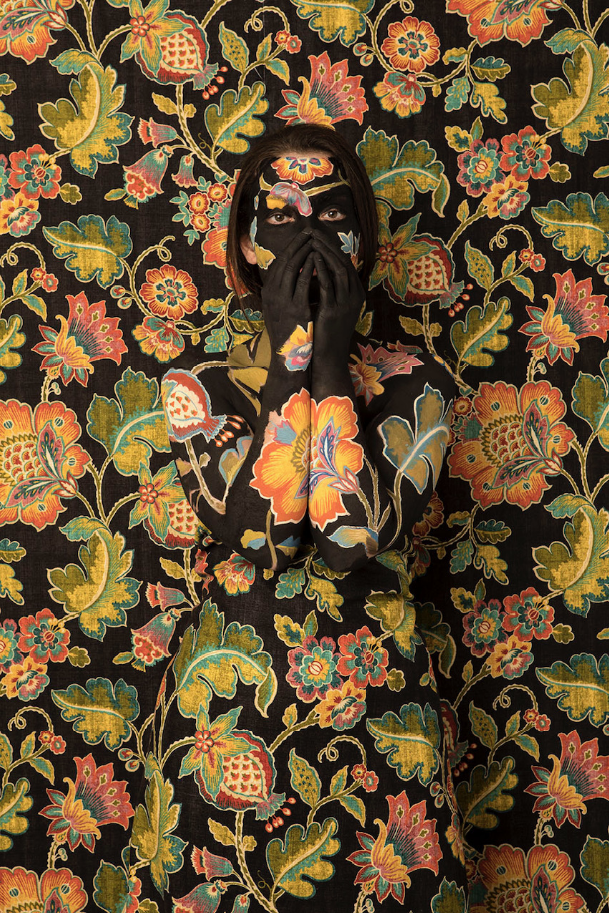
The Whisper | Cecilia Paredes, 2021
March 31, 2022The Whisper | Cecilia Paredes, 2021
“I’ve got out at last,” said I, “in spite of you and Jane. And I’ve pulled off most of the paper, so you can’t put me back!”
Now why should that man have fainted? But he did, and right across my path by the wall, so that I had to creep over him every time!”
(The Yellow Wallpaper, Charlotte Perkins Gilman)
Paredes’ self portraits are unsettling: in this one, she actually makes eye contact with us, making it harder to ignore, yet easier to ‘find’ her, within the composition. Though her work is a performative metaphor for our relationship with the environment, one can’t help but also see a statement about women and the still too frequent dismissal of female artists, in her artworks. The ‘wallpaper’ of The Whisper – in conversation with a friend – brought to mind the story I cited at the beginning of this piece, which was published in 1892, and touches upon many of the themes I’ve mentioned. This story can be read here: but I offer a brief taste of its haunting narrative below.
The narrator devotes many journal entries to describing the wallpaper in the room – its “sickly” color, its “yellow” smell, its bizarre and disturbing pattern like “an interminable string of toadstools, budding and sprouting in endless convolutions,” its missing patches, and the way it leaves yellow smears on the skin and clothing of anyone who touches it. She describes how the longer one stays in the bedroom, the more the wallpaper appears to mutate, especially in the moonlight. With no stimulus other than the wallpaper, the pattern and designs become increasingly intriguing to the narrator. She soon begins to see a figure in the design. Eventually, she comes to believe that a woman is creeping on all fours behind the pattern. Believing she must free the woman in the wallpaper, she begins to strip the remaining paper off the wall.
‘Cecilia Paredes creates self-portraits that play with disguise and metamorphosis. She is known for a series in which she appears to vanish into a graphic backdrop. These “photo performances,” as the artist calls them, often involve her painting herself with bright, intricate patterns before documenting her body against a wall of the same motifs. Influenced by nature, Paredes also transforms herself into animals in realistic, glamorous studio portraits….Paying tribute to the flora and fauna of her native Peru, Paredes creates layered statements of her own identity. Her works also speak to humans’ relationship with nature and our responsibility to threatened environments.’ (from here)
More of her work can be seen at her Instagram @ceciliaparedesarte and a longer article about this series can be enjoyed here.
~ Bart Gazzola
Read More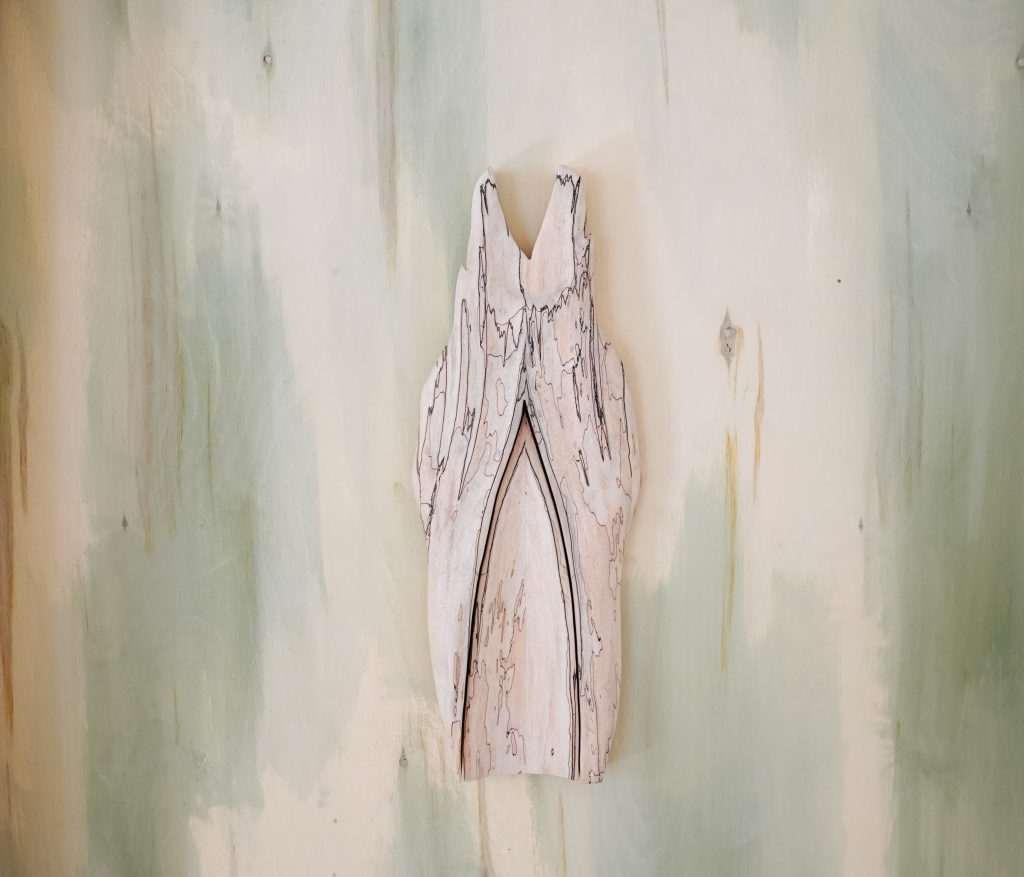
Megan Feniak | Listily Lean
March 28, 2022Megan Feniak | Listily Lean
Warm wood elements and ethereal, textured lines swirl around a white washed room, bathed in natural light. Megan Feniak’s show, Listily Lean, is simultaneously methodical and untethered: an open reflection on currents of desire in the context of religious experience.
The show’s title comes from a passage in a 14th century mystical text, The Cloud of Unknowing: “lean listily to this meek stirring of love in thine heart, and follow thereafter.” The artist notes the discontinued use of the word, listing, and motions to define it by what it is not: the more commonly used term listless, having no energy or enthusiasm (Oxford Dictionary). She describes leaning listily as “to chase, or to follow with an eagerness- an insatiable craving” a craving that is distinct from the negative connotations associated with the word lust. And it is so, the work is not a passive series of pieces but acts in unison, as one figurative brush stroke that embodies action, momentum, a burst of motion toward and in pursuit. Of what exactly? Only the artist knows.
Influenced by the works of Christian mystics, Feniak describes the research leading up to her show as circling around Anne Carson’s text, Eros the Bittersweet. This helped frame Feniak’s own work around eros as both pleasure and pain and to also speak to lack. Feniak describes the paradox of desire as “sustained only as long as the desired is out of reach. Absence is the surprising factor in the equation of desire” and quotes Carson in saying, “for (their) delight is in reaching; to reach for something perfect would be perfect delight” (Eros the Bittersweet 69).
According to Feniak, it is this act of reaching for something perfect that is both the joy and the confounding dilemma of mystics. In her work, she listily leans to understand; hungrily, painfully yearns to both capture and test the limits of human desire.
To stretch the title even further, the pieces also appear to have a desired lean, pared down feel to them, while their earnest presence marks the space with an overwhelming sense of profundity and wistfulness. The eagerness and motion indicated by the title is captivated by the fragments of wood carvings and sculpture, dispersed throughout the room and woven together by the strokes of fluidity marked by the lighter, wispy elements of show. The intensities of desire and delight are stitched by the deeply spiritual threads of mysticism and relish in a dreamlike experience beyond the daily and mundane.
In describing the show, I apply the artist’s own method of distilling “listily”– by describing what it is not. It is not loud nor sanctimonious, but it is not quiet. It is not self-congratulatory and yet it is not meek. It is not frozen in one specific time or place, but feels as though it is part of a continuum, both for the artist but also for a more universal theme of human relation to divine exploration. In the same way that spiritual practice shatters human perception and notions of boundary, Listily Lean creates a bodily intimacy with the abstract and leaves us craving for more.
Megan Feniak received her BFA from the Alberta University of the Arts in 2018, and MFA from the University of Guelph in 2021. Working in sculpture and woodcarving, her sculptures intimate the power of affects, gestures, and the positioning of the body in ritual and belief.
Website: http://www.meganfeniak.com
Instagram: @fenny__.__
~ Paulette Cameron
Read More
Renée Mathews: Fluidity and Intuition – Femme Folks Fest Repost
March 18, 2022Renée Mathews: Fluidity and Intuition by Glodeane Brown, Guest Curator SECRETS by Renée Mathews The COVERT Collective is pleased to be... Read More
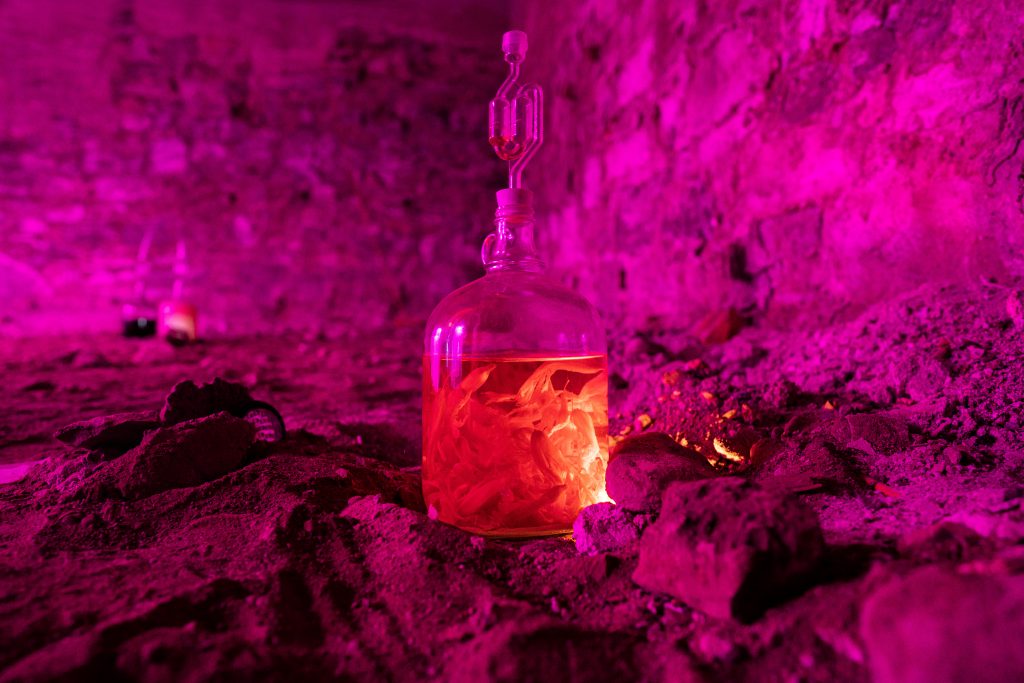
Maria Simmons – Fermentation of Ideas – Femme Folks Fest Special
March 17, 2022Maria Simmons Fermentation of Ideas The COVERT Collective is pleased to be participating in Femme Folks Fest 2022. Maria Simmons is an eclectic,... Read More
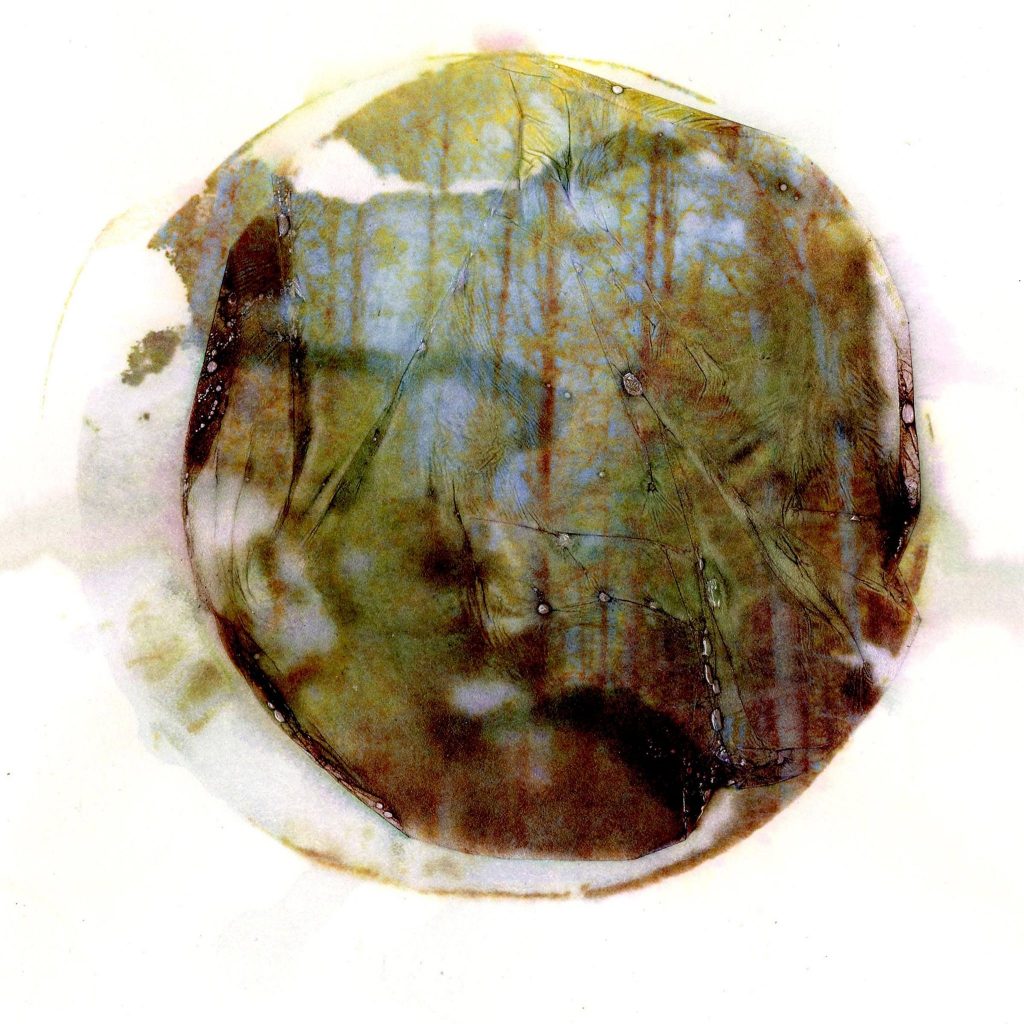
Cree Tylee – Femme Folks Fest Repost
March 17, 2022Cree Tylee ``...now I am rampant with memory....`` The COVERT Collective is pleased to be participating in Femme Folks Fest 2022. Today... Read More
Recent Comments